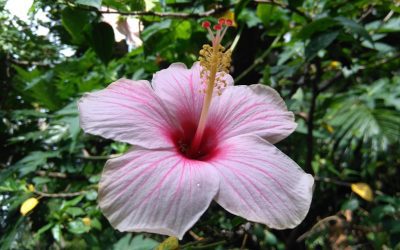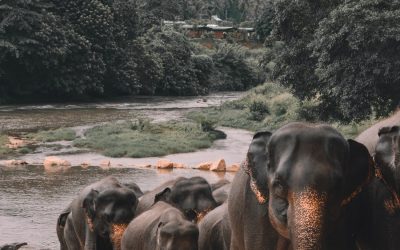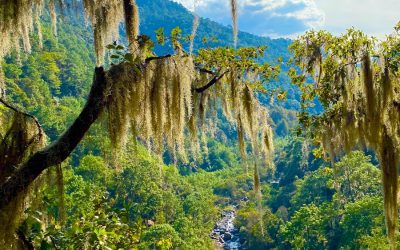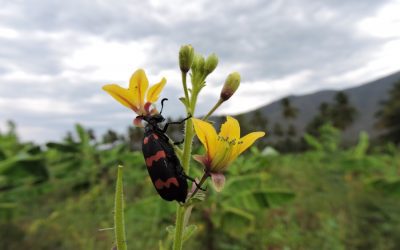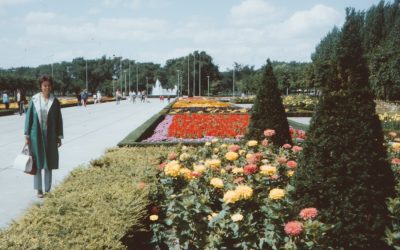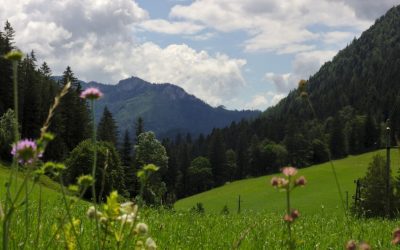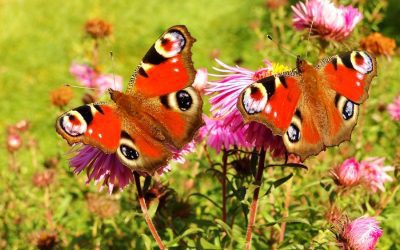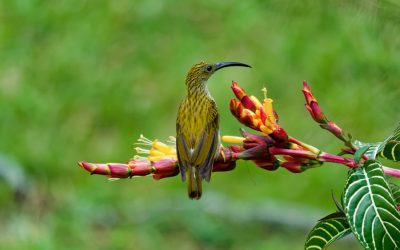World Geography
Geography is the study of the Earth’s landscapes, environments, and the relationships between people and their surroundings. It encompasses both the physical aspects of the Earth, such as its landforms, bodies of water, and climate, as well as the human aspects, including population distribution, cultures, and economies. World geography is a broad field that seeks to understand the complexities of our planet and how humans interact with it. By studying world geography, we can gain a deeper appreciation for the diversity of our planet and the interconnectedness of its various regions.
Geography is a multidisciplinary field that draws on elements of physical science, social science, and humanities. It involves the use of maps, spatial analysis, and geographic information systems (GIS) to understand the Earth’s surface and the processes that shape it. World geography also encompasses the study of human geography, which examines the ways in which people and their activities are distributed across the Earth. By understanding world geography, we can better appreciate the environmental, cultural, and economic challenges facing different regions of the world. This knowledge is crucial for addressing global issues such as climate change, resource management, and international development.
The Five Oceans and Seven Continents
The Earth’s surface is divided into five major oceans: the Pacific, Atlantic, Indian, Southern (or Antarctic), and Arctic Oceans. These vast bodies of water play a crucial role in regulating the Earth’s climate and supporting diverse marine ecosystems. The oceans also serve as important transportation routes and a source of food and other natural resources for human societies around the world.
In addition to the oceans, the Earth’s landmasses are divided into seven continents: Africa, Antarctica, Asia, Europe, North America, Australia (or Oceania), and South America. Each continent has its own unique physical and cultural characteristics, shaped by millions of years of geological processes and human history. From the deserts of Africa to the rainforests of South America, the continents offer a rich tapestry of landscapes and environments for exploration and study.
Major Mountain Ranges and Deserts
The Earth’s surface is also marked by major mountain ranges and deserts that have shaped the planet’s physical and cultural landscapes. The Himalayas, for example, are the highest mountain range in the world and are home to diverse ecosystems and cultures in countries such as India, Nepal, and Bhutan. The Andes in South America, the Rockies in North America, and the Alps in Europe are other prominent mountain ranges that have influenced human settlement patterns and economic activities.
Deserts cover about one-third of the Earth’s land surface and are characterized by low precipitation and extreme temperatures. The Sahara Desert in Africa is the largest hot desert in the world, while the Gobi Desert in Asia is one of the largest cold deserts. Deserts are not only home to unique flora and fauna but have also been important trade routes and cultural crossroads throughout history.
Climate Zones and Biomes
The Earth’s climate is influenced by a variety of factors, including latitude, altitude, ocean currents, and prevailing winds. As a result, the planet is divided into different climate zones, each with its own characteristic weather patterns and ecosystems. The equator, for example, experiences a tropical climate with high temperatures and heavy rainfall, while the polar regions have a cold and dry climate.
These climate zones give rise to different biomes, or large ecological areas characterized by distinct plant and animal communities. The tropical rainforest biome, found near the equator, is home to a diverse array of species and is vital for regulating the Earth’s climate. The grasslands biome, found in regions such as the African savannah and North American prairies, supports grazing animals and has been important for human agriculture throughout history.
Human Geography and Population Distribution
Human geography examines the ways in which people and their activities are distributed across the Earth’s surface. It encompasses topics such as population growth, migration patterns, urbanization, and cultural diversity. Understanding human geography is crucial for addressing global challenges such as poverty, inequality, and environmental degradation.
Population distribution is uneven across the world, with some regions experiencing rapid population growth while others are declining. The majority of the world’s population lives in Asia, particularly in countries such as China and India. Urban areas are also growing rapidly, with more than half of the world’s population now living in cities. This trend has significant implications for infrastructure development, resource management, and social inequality.
Historical and Cultural Geography
Historical geography examines how human activities have shaped the Earth’s landscapes over time. It explores topics such as colonialism, trade routes, and the rise and fall of empires. Cultural geography focuses on how human cultures have developed in different regions of the world and how they interact with their environments.
The Silk Road, for example, was an ancient trade route that connected China with Europe and facilitated the exchange of goods, ideas, and technologies across Eurasia. This historical trade route had a profound impact on the development of cultures and economies along its path. Similarly, cultural geographers study how different societies have adapted to their environments through practices such as agriculture, architecture, and religious beliefs.
The Importance of Geographic Knowledge
Geographic knowledge is crucial for addressing global challenges such as climate change, resource management, and international development. By understanding world geography, we can better appreciate the environmental, cultural, and economic challenges facing different regions of the world. This knowledge is crucial for addressing global issues such as climate change, resource management, and international development.
Geographic knowledge also helps us to understand our interconnectedness with other regions of the world. By studying world geography, we can gain a deeper appreciation for the diversity of our planet and the interconnectedness of its various regions. This understanding can foster a sense of global citizenship and empathy for people from different cultures and backgrounds.
In conclusion, world geography is a complex and multifaceted field that encompasses both physical and human aspects of the Earth’s landscapes. By studying world geography, we can gain a deeper appreciation for the diversity of our planet and the interconnectedness of its various regions. This knowledge is crucial for addressing global challenges such as climate change, resource management, and international development. It also helps us to understand our interconnectedness with other regions of the world and fosters a sense of global citizenship.
FAQs
What is world geography?
World geography is the study of the Earth’s landscapes, environments, and the relationships between people and their environments. It encompasses the physical features of the Earth, as well as the human activity that takes place on it.
Why is world geography important?
World geography is important because it helps us understand the world around us. It provides insights into the physical and human processes that shape our planet, and helps us make informed decisions about how to interact with our environment.
What are the main branches of world geography?
The main branches of world geography include physical geography, which focuses on the Earth’s natural features and processes, and human geography, which examines the relationships between people and their environments.
How does world geography impact our daily lives?
World geography impacts our daily lives in numerous ways, from influencing the weather and climate we experience, to shaping the availability of natural resources and influencing the distribution of populations and cultures around the world.
What are some key concepts in world geography?
Key concepts in world geography include location, place, human-environment interaction, movement, and region. These concepts help geographers understand and interpret the world around them.
Exploring the Wildlife of Turkmenistan
Turkmenistan, a country located in Central Asia, is often overlooked in discussions about biodiversity and ecological richness. However, it boasts a remarkable array of ecosystems that range from arid deserts to lush wetlands, each supporting a unique assemblage of flora and fauna. The Karakum Desert, which covers a significant portion of the country, is characterised by its shifting sands and sparse vegetation. Despite its harsh conditions, this desert is home to a variety of resilient plant species, such as the saxaul tree (Haloxylon ammodendron), which plays a crucial role in stabilising the soil and providing habitat for various animals. In contrast to the arid expanses of the Karakum, the Kopet Dag mountain range offers a different ecological landscape. This mountainous region is rich in biodiversity, featuring forests of juniper and oak that provide shelter for numerous species. The foothills and valleys are dotted with rivers and streams, creating a mosaic of habitats that support both terrestrial and aquatic life. The wetlands along the Caspian Sea also contribute to Turkmenistan’s ecological diversity, serving as critical stopover points for migratory birds and supporting a variety of fish species. These diverse ecosystems not only contribute to the country’s natural beauty but also play a vital role in maintaining ecological balance and supporting local communities. Summary Turkmenistan boasts a diverse range of ecosystems, including deserts, mountains, and wetlands, providing habitats for a wide variety of flora and fauna. The country is home to unique species of flora and fauna, such as the rare Caspian seal and the endangered goitered gazelle, which are found in the protected areas of Turkmenistan. Conservation efforts in Turkmenistan...
Exploring Portugal’s Rich Flora and Fauna
Portugal, a nation steeped in history and culture, is equally renowned for its remarkable biodiversity. Nestled on the Iberian Peninsula, it boasts a variety of ecosystems that range from coastal regions to mountainous terrains, each hosting a unique array of flora and fauna. The country’s geographical position, with its Mediterranean climate and Atlantic influences, creates a rich tapestry of habitats that support an impressive variety of species. This biodiversity is not merely a backdrop to the Portuguese landscape; it is an integral part of the nation’s identity and heritage. The significance of Portugal’s biodiversity extends beyond its natural beauty. It plays a crucial role in maintaining ecological balance, supporting livelihoods, and contributing to the economy through sectors such as tourism and agriculture. The intricate web of life found within Portugal’s borders is a testament to millions of years of evolution, shaped by both natural processes and human activity. As we delve deeper into the diverse ecosystems, unique flora, and fascinating fauna of Portugal, we will uncover the importance of conservation efforts aimed at preserving this invaluable natural heritage. Summary Portugal is home to a rich and diverse range of flora and fauna, making it a hotspot for biodiversity in Europe. From the lush forests of the north to the arid landscapes of the south, Portugal boasts a wide variety of ecosystems, each supporting a unique array of plant and animal life. The flora of Portugal includes over 4,000 species of plants, many of which are endemic to the region and can be found nowhere else in the world. Portugal’s fauna is equally impressive, with a wide range of mammals,...
Exploring Liberia’s Rich Flora and Fauna
Liberia, a nation located on the west coast of Africa, is often celebrated for its rich and diverse biodiversity. This small country, which covers an area of approximately 111,369 square kilometres, is home to a remarkable array of ecosystems, ranging from coastal mangroves to lush rainforests and savannahs. The unique geographical position of Liberia, bordered by the Atlantic Ocean to the south and flanked by mountainous regions to the north, contributes significantly to its ecological variety. The country’s climate, characterised by a tropical monsoon pattern, further enhances the conditions for a wide range of plant and animal species to thrive. The biodiversity of Liberia is not merely a collection of species; it represents a complex web of interactions among organisms and their environments. This intricate system supports not only the ecological balance but also the livelihoods of local communities who depend on these natural resources for sustenance and economic activities. The forests of Liberia are among the last remaining in West Africa, providing habitat for numerous endemic species and serving as crucial carbon sinks that mitigate climate change. Understanding and appreciating this biodiversity is essential for both conservation efforts and sustainable development in the region. Summary Liberia is home to a rich and diverse range of flora and fauna, making it a hotspot for biodiversity in West Africa. The unique flora of Liberia includes over 2,300 species of plants, many of which are endemic to the region and have important medicinal and cultural value. The diverse fauna of Liberia includes a wide variety of mammals, birds, reptiles, and amphibians, with many species facing threats from habitat loss and poaching....
Exploring the Flora and Fauna of Guernsey
Guernsey, one of the Channel Islands, is a treasure trove of biodiversity, boasting a unique blend of flora and fauna that reflects its rich geological history and varied habitats. Situated in the English Channel, this small island is not only known for its stunning coastal landscapes but also for its diverse ecosystems that support a wide range of species. The island’s mild maritime climate, combined with its varied topography, creates an environment where both native and introduced species can thrive. This biodiversity is not merely a backdrop to the island’s picturesque scenery; it plays a crucial role in maintaining ecological balance and supporting local communities. The significance of Guernsey’s biodiversity extends beyond its natural beauty. It is a vital component of the island’s cultural heritage and economy, particularly through sectors such as tourism and agriculture. The unique species found here, many of which are endemic or rare, attract nature enthusiasts and researchers alike. Understanding and appreciating this biodiversity is essential for fostering a sense of stewardship among residents and visitors, ensuring that these natural treasures are preserved for future generations. As we delve deeper into the unique flora and fauna of Guernsey, we will uncover the intricate relationships that exist within its ecosystems and the ongoing efforts to protect them. Summary Guernsey boasts a rich and diverse biodiversity, with a unique combination of flora and fauna. The island is home to a variety of unique and rare plant species, including the Guernsey Lily and the Green-flowered Helleborine. Guernsey’s diverse fauna includes a range of bird species, marine life, and small mammals such as hedgehogs and bats. Conservation efforts in...
Exploring Puerto Rico’s Rich Flora and Fauna
Puerto Rico, a vibrant island nestled in the Caribbean Sea, is renowned for its rich and diverse biodiversity. This small territory, measuring approximately 3,500 square miles, is home to an astonishing array of plant and animal species, many of which are unique to the island. The combination of its tropical climate, varied topography, and distinct ecosystems contributes to a remarkable variety of habitats, ranging from lush rainforests to arid coastal areas. The island’s biodiversity is not merely a collection of species; it represents a complex web of interactions that sustain the ecological balance and cultural heritage of Puerto Rico. The significance of Puerto Rico’s biodiversity extends beyond its natural beauty; it plays a crucial role in the island’s economy, culture, and overall well-being. The ecosystems provide essential services such as clean water, pollination of crops, and natural pest control. Furthermore, the unique flora and fauna have shaped the cultural identity of the Puerto Rican people, influencing art, folklore, and traditional practices. However, this rich tapestry of life faces numerous challenges that threaten its survival, making it imperative to understand and appreciate the intricate relationships within these ecosystems. Summary Puerto Rico is home to a rich and diverse range of flora and fauna, making it a hotspot for biodiversity. The unique flora of Puerto Rico includes over 2,000 species of plants, with a high percentage being endemic to the island. The diverse fauna of Puerto Rico includes a variety of mammals, reptiles, amphibians, and birds, many of which are also endemic to the island. Puerto Rico is home to numerous endemic species, including the critically endangered Puerto Rican parrot and...
Discovering the Biodiversity of Sri Lanka: The Flora and Fauna
Sri Lanka, an island nation located in the Indian Ocean, is renowned for its remarkable biodiversity, which is a product of its unique geographical position and varied climatic conditions. The island’s diverse ecosystems range from lush rainforests and arid plains to mountainous regions and coastal wetlands, each supporting a plethora of plant and animal life. This rich tapestry of biodiversity has earned Sri Lanka the title of a “biodiversity hotspot,” a designation that highlights its exceptional levels of endemism and the urgent need for conservation efforts. The island is home to over 26,000 species of flora and fauna, with a significant proportion found nowhere else on Earth. The significance of Sri Lanka’s biodiversity extends beyond its aesthetic appeal; it plays a crucial role in the livelihoods of local communities and the overall health of the planet. The ecosystems provide essential services such as clean water, soil fertility, and climate regulation. Furthermore, the cultural heritage of Sri Lanka is deeply intertwined with its natural environment, as many communities rely on traditional practices that are closely linked to the land and its resources. Understanding and preserving this biodiversity is not only vital for ecological balance but also for sustaining the socio-economic fabric of the nation. Summary Sri Lanka is home to a rich and diverse range of flora and fauna, making it a hotspot for biodiversity. The unique flora of Sri Lanka includes a variety of tropical plants, orchids, and medicinal herbs, some of which are found nowhere else in the world. The diverse fauna of Sri Lanka includes a wide range of mammals, birds, reptiles, and amphibians, many of which...
Exploring Georgia’s Rich Flora and Fauna
Georgia, a country nestled at the crossroads of Eastern Europe and Western Asia, boasts an extraordinary array of biodiversity that is both rich and varied. This small yet ecologically significant region is home to a multitude of ecosystems, ranging from the lush subtropical forests along the Black Sea coast to the arid landscapes of the Great Caucasus Mountains. The unique geographical position of Georgia, combined with its diverse climatic conditions, has fostered an environment where numerous species of plants and animals thrive. The country’s biodiversity is not merely a collection of species; it represents a complex web of life that has evolved over millennia, shaped by both natural processes and human influence. The significance of Georgia’s biodiversity extends beyond its borders, as it plays a crucial role in global ecological health. The country is part of the Caucasus biodiversity hotspot, which is recognised for its high levels of endemism and species richness. This region is home to over 6,000 species of vascular plants, many of which are unique to Georgia. Furthermore, the intricate ecosystems found within its national parks and protected areas serve as vital habitats for countless animal species. Understanding and appreciating this biodiversity is essential not only for conservation efforts but also for the cultural identity of the Georgian people, who have long relied on their natural environment for sustenance and inspiration. Summary Georgia is home to a rich and diverse range of flora and fauna, making it a hotspot for biodiversity. The flora of Georgia includes over 4,000 species of plants, with a variety of ecosystems from mountains to wetlands. Georgia’s fauna is equally diverse, with...
Exploring the Biodiversity of Timor-Leste’s Flora and Fauna
Timor-Leste, a small island nation located in Southeast Asia, is renowned for its remarkable biodiversity, which is a product of its unique geographical position and varied ecosystems. Situated at the confluence of the Indian and Pacific Oceans, the country boasts a rich tapestry of flora and fauna that reflects both its tropical climate and its complex geological history. The island’s diverse habitats range from coastal mangroves and coral reefs to mountainous regions and lush rainforests, each supporting a myriad of species that are often endemic to the region. This biodiversity is not only vital for the ecological balance but also plays a crucial role in the cultural and economic fabric of the nation. The significance of Timor-Leste’s biodiversity extends beyond its natural beauty; it is integral to the livelihoods of local communities. Many Timorese people rely on the land and sea for their sustenance, engaging in agriculture, fishing, and traditional practices that have been passed down through generations. The preservation of this biodiversity is essential not only for maintaining these traditional ways of life but also for ensuring food security and promoting sustainable development. As such, understanding and protecting the unique ecosystems of Timor-Leste is paramount for both environmental health and socio-economic stability. Summary Timor-Leste is home to a rich and diverse range of flora and fauna, making it a hotspot for biodiversity. The unique flora of Timor-Leste includes a variety of orchids, sandalwood trees, and the rarest species of fig trees. The diverse fauna of Timor-Leste includes the critically endangered Timor deer, the Timor python, and a wide range of bird species. Conservation efforts in Timor-Leste are focused...
Exploring the Rich Flora and Fauna of Poland
Poland, a country located in Central Europe, is renowned for its rich and diverse biodiversity, which is a product of its varied landscapes, climatic conditions, and historical influences. The nation boasts a unique blend of ecosystems, ranging from the sandy beaches of the Baltic Sea to the rugged mountains of the Carpathians. This geographical diversity has fostered a wide array of flora and fauna, making Poland a significant area for biodiversity in Europe. The country is home to over 30,000 species of plants and animals, many of which are endemic or have significant populations within its borders. The importance of Poland’s biodiversity extends beyond mere numbers; it plays a crucial role in maintaining ecological balance and supporting human livelihoods. Healthy ecosystems provide essential services such as clean air and water, pollination of crops, and natural pest control. Furthermore, Poland’s rich natural heritage is intertwined with its cultural identity, as many communities rely on local biodiversity for traditional practices, cuisine, and tourism. As such, understanding and preserving this biodiversity is vital not only for environmental sustainability but also for the cultural and economic well-being of the nation. Summary Poland boasts a rich and diverse biodiversity, with a wide range of ecosystems and species. The country is home to rare and endangered species, making conservation efforts crucial. Poland has several national parks and protected areas that showcase its natural beauty and wildlife. Birdwatching and wildlife tours offer unique opportunities to observe Poland’s diverse bird species and other wildlife. Exploring Poland’s forests and wetlands provides a chance to experience the country’s natural landscapes and diverse flora and fauna. The Diverse Ecosystems of...
Exploring the Flora and Fauna of Liechtenstein
Nestled between Switzerland and Austria, the Principality of Liechtenstein is a small yet ecologically rich country that boasts a remarkable diversity of flora and fauna. Despite its modest size of just 160 square kilometres, the landscape is characterised by a variety of habitats, ranging from alpine meadows and forests to river valleys and rocky outcrops. This geographical diversity contributes to a unique ecosystem that supports numerous species, some of which are endemic or rare. The country’s commitment to preserving its natural heritage is evident in its conservation policies and the establishment of protected areas, making it a significant player in the realm of biodiversity conservation in Europe. Liechtenstein’s biodiversity is not merely a backdrop to its picturesque scenery; it plays a crucial role in the ecological balance and the well-being of its inhabitants. The intricate web of life found within its borders is essential for maintaining ecosystem services such as pollination, water purification, and soil fertility. Furthermore, the rich biodiversity contributes to the cultural identity of the nation, influencing local traditions, cuisine, and even economic activities such as tourism and agriculture. Understanding and appreciating this biodiversity is vital for fostering a sense of stewardship among residents and visitors alike. Summary Liechtenstein boasts a rich biodiversity, with a diverse range of flora and fauna. The country is home to over 1,000 species of plants, including rare alpine flowers and medicinal herbs. Liechtenstein’s fauna includes a variety of mammals, birds, reptiles, and amphibians, such as the red deer and the golden eagle. Conservation efforts in Liechtenstein focus on preserving natural habitats and protecting endangered species. Visitors can explore the country’s stunning...
Exploring the Flora and Fauna of the UK
The United Kingdom boasts a rich tapestry of flora and fauna, shaped by its varied landscapes, climate, and human influence over centuries. From the rugged highlands of Scotland to the gentle rolling hills of the English countryside, the UK is home to an impressive array of plant and animal species. The geographical isolation of the islands has allowed for the evolution of unique species, while the temperate maritime climate provides a conducive environment for diverse ecosystems to flourish. This intricate web of life is not only a testament to nature’s resilience but also a vital component of the UK’s cultural heritage. The flora of the UK is characterised by a mix of native and introduced species, with over 1,500 types of flowering plants recorded. The landscape is dotted with ancient woodlands, heathlands, wetlands, and grasslands, each supporting distinct communities of plants and animals. The fauna is equally diverse, with mammals, birds, reptiles, amphibians, and countless invertebrates inhabiting various niches. This biodiversity is crucial for maintaining ecological balance and providing essential services such as pollination, pest control, and soil fertility. Understanding the intricate relationships between these species and their habitats is fundamental to appreciating the natural heritage of the UK. Summary The UK is home to a diverse range of flora and fauna, from ancient woodlands to coastal habitats. The iconic wildlife of the UK includes species such as red deer, red squirrels, and puffins. Endangered species in the UK include the Scottish wildcat and the European eel. Conservation efforts and wildlife reserves play a crucial role in protecting the UK’s natural heritage. Unique plant species in the UK include...
Exploring the Biodiversity of Papua New Guinea
Papua New Guinea (PNG) is a nation renowned for its extraordinary biodiversity, which is among the richest in the world. Situated in the southwestern Pacific Ocean, this archipelago comprises the eastern half of the island of New Guinea and numerous smaller islands. The country’s unique geographical position, coupled with its varied topography and climate, has fostered an environment where an astonishing array of species thrives. PNG is home to over 20,000 plant species, 3,000 species of fish, and 1,200 species of birds, many of which are endemic to the region. This remarkable diversity is not merely a statistic; it represents a complex web of life that has evolved over millions of years, shaped by the island’s isolation and diverse habitats. The significance of PNG’s biodiversity extends beyond its sheer numbers; it plays a crucial role in the ecological balance of the region and provides vital resources for local communities. The forests, rivers, and marine environments are not only home to countless species but also serve as a source of food, medicine, and cultural identity for the indigenous populations. The intricate relationships between species and their habitats underscore the importance of preserving this biodiversity, as it is integral to the health of ecosystems and the livelihoods of those who depend on them. Summary Papua New Guinea is home to a rich and diverse range of flora and fauna, making it one of the most biodiverse countries in the world. The unique ecosystems and habitats in Papua New Guinea, such as rainforests, coral reefs, and mangroves, support a wide variety of plant and animal species. Conservation efforts in Papua New Guinea...




